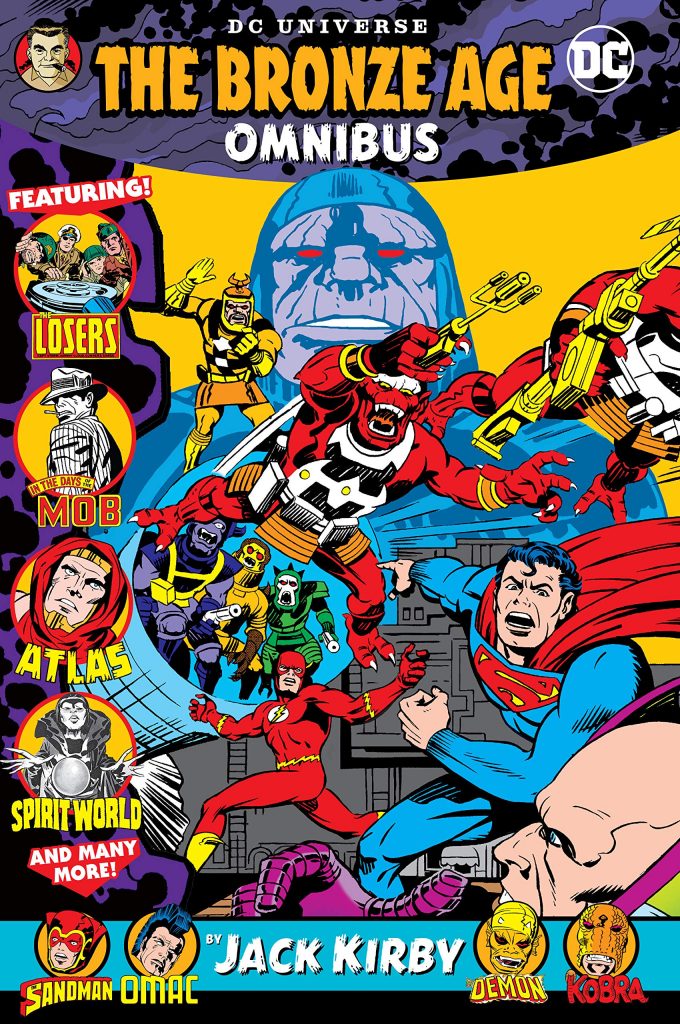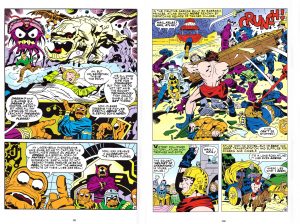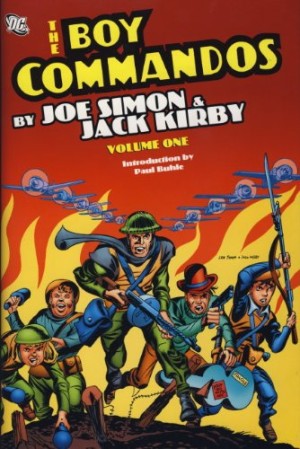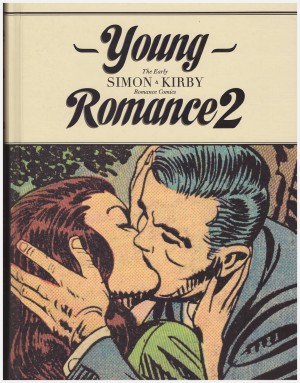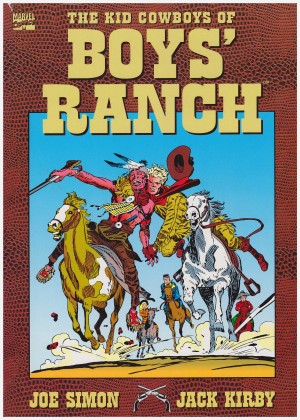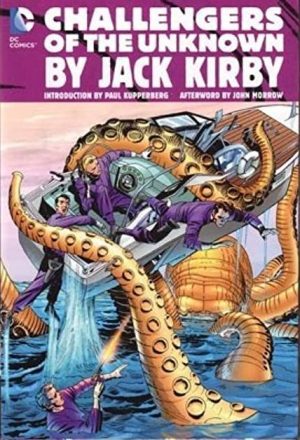Review by Frank Plowright
A talent Jack Kirby mastered early in his career was the impact cover illustration, so it’s a shame that this gathering of 1970s and 1980s DC work features such an uncharacteristically messy and poorly designed example. Still, it’s the content that counts, and that’s just shy of 1500 pages, so even at the cover price of $150 it works out at ten pages of Kirby art for a dollar, which is some bargain.
That’s underlined by this collection featuring the content of six previously issued hardcovers. The Demon (366 pages), In the Days of the Mob (85 pages) and The Losers (248 pages) are all prime Kirby greatly enthused by the subjects. We have more reservations about Omac (170 pages) and Spirit World (90 pages) but both have brilliant moments ranking them also recommendable. Super Powers (242 pages) doesn’t reach those standards. Follow the links for greater detail. The remaining stories were found in the second Jack Kirby Omnibus, although included there, but not here are Kirby’s horror collaborations with Joe Simon for Black Magic. That’s presumably on the basis of them being produced during the 1940s, but reprinted in the 1970s.
Their absence reduces the genre list slightly, yet the sheer variety of Kirby’s interests is supplied by those stories encompassing biography, crime, horror, mystery, SF, superheroes and war, almost all action-oriented. Of the single issue reprints, Atlas stands out for prime 1970s Kirby action art, up there with the best of the book, but it’s little more than a set-up for a series that never manifested. Stronger overall are the characters of Manhunter and Kobra. The first takes its name from a series Kirby worked on in the 1940s, but adds the weirdness of a secret society and disembodied heads, although Kirby doesn’t seem to realise Archie Goodwin and Walt Simonson had already worked wonders with their interpretation of Manhunter’s legacy. Kobra features some unfortunate inking from Pablo Marcos toward the end, but it’s a thriller. Kirby takes the idea of twin brothers separated at birth from either the Dumas novel or the 1941 Douglas Fairbanks film, along with each feeling the physical or emotional pain of the other experiences. In this instance Kobra leads a cult that would rule the world, while his twin Jason Burr leads an ordinary life. Martin Pasko scripts a story supplied by Kirby and Steve Sherman. Both Kobra and Manhunter would prove minor legacy characters for DC.
As on other projects, Kirby’s at his best with this material when he’s either working solo, or left largely in control. Super Powers, a teaming of Superman with the Challengers of the Unknown, a kung-fu story and Sandman are all collaborations with others, and all weaker. Sandman bucks the trend slightly by virtue of a more imaginative concept and artwork, but still never gels creatively. It seems a series aimed at a younger audience, yet Kirby’s freakishly disturbing creations ensured they’d never see it back in the day.
Not everything here is Kirby at his absolute best, but more than enough is to justify the investment if you’ve not previously picked up the individual collections.
